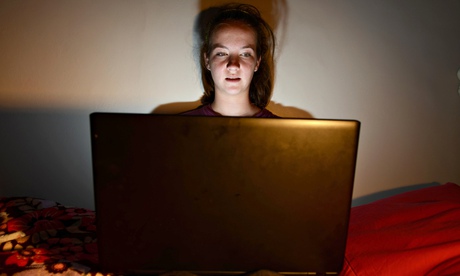
Two in three girls aged 14 and 15 say they want to lose weight, according to an annual survey of 78,000 teenagers, which reveals a startling increase in recent years in teenage girls who are anxious about their size.
The percentage of girls in their mid-teens who say they are overweight shot up from 56% in 2009 to 64% in 2014. Among 14- and 15-year-old males, 29% said they also wanted to slim down. A similar survey carried out in 1991 found that 54% of female pupils and 22% of males “would like to lose weight”.
The Schools Health Education Unit (SHEU), which works with local authorities to monitor the health and lifestyles of pupils, said a worryingly high proportion of those girls who felt they should be slimmer were acting on their anxieties, with 17% saying they ate no breakfast and one in four (24%) missing lunch.
Dr David Regis, research manager at the SHEU, which has been carrying out mass surveys for local authorities since 1977, said: “We have looked at correlations with how these youngsters who say they want to lose weight actually eat. Are they just agonising, or taking steps to lose weight? We certainly find that they are avoiding high-calorie foods and skipping meals, which is never the best way to lose weight anyway.”
Regis said he was also alarmed by the number of younger girls who were unhappy with their weight. Half (51%) of 12- and 13-year-old females said they wanted to lose weight, up from 44% in 1991. Nearly a third (31%) of 10- and 11-year-olds also said they would like to slim down, up from 26% in 1991.
In these younger categories, the rise appears to have happened in the first decade of this century, with the figures having flatlined since then.
The survey results emerge as parts of the media and some major retailers have, once again, come under fire for promoting unrealistic and unhealthy body shapes as the norm. Last week the clothes giant Topshop agreed to stop using very tall and skinny mannequins after Laura Berry, 25, complained on Facebook that they had “ridiculous” proportions. The post has attracted more than 5,000 “likes”, and hundreds replied on Topshop’s Facebook page in a sign of growing anger at the manner in which women are made to feel insecure.
The SHEU survey revealed last year that, more generally, self-esteem of teenage girls had fallen significantly since the start of the most recent economic downturn. After consistent year-on-year increases since the early 1990s in the number of young people scoring in the highest bracket of self-esteem, a sudden and dramatic change occurred after 2007. From a peak that year, when 41% of 14- and 15-year-old girls reported high self-esteem, that figure had fallen to 33%.
This year’s survey shows that this trend has continued, with just 26% now evaluating themselves as having high self-esteem.
“Youngsters are feeling less comfortable in several areas of their lives, with lower self-esteem, and perhaps alongside that is less body confidence,” Regis said. “It is a well rehearsed argument, but there is an over-representation in the media of a particular selection of body types and a lack of representation and celebration of more realistic and no less healthy body types.”
Angela Balding, survey manager at the Schools Health Education Unit, said the evidence suggested there was a correlation with the use of social media, which may be acting as an echo chamber for existing worries.
“We mentioned last year that the rising trend of self-esteem from 1997-2007 stopped in 2008, and the figures we are seeing for high self-esteem in 2014 have fallen again since last year, especially for girls.
“The 2008 date coincides with the economic recession, so that’s a plausible explanation – but we are also aware of new pressures about being online and spending so much time on social media.
“Social media can be a source of social anxiety and, of course, cyberbullying and other dangers. For example, the Year 10 girls [14 and 15 years old] who spent three-plus hours messaging online were more likely to say someone they didn’t know in person had asked to meet them, and they report more exposure to other undesirable online behaviours.”

